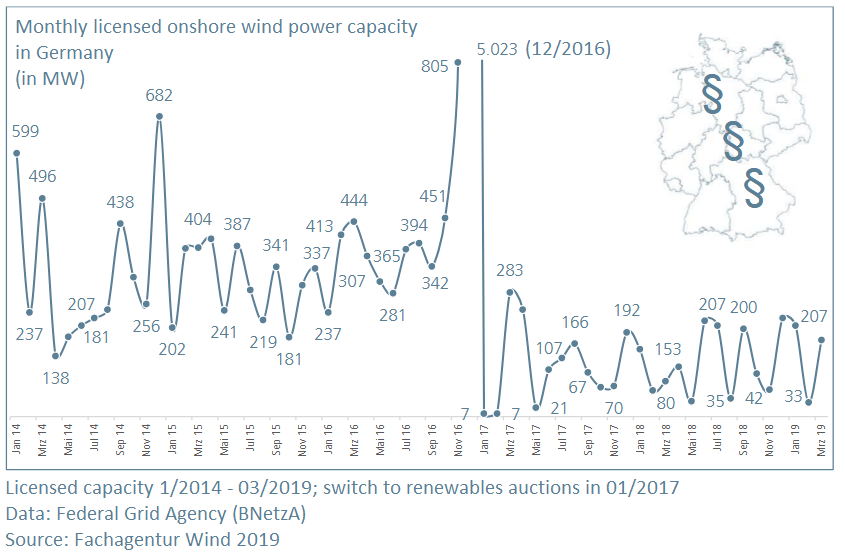Onshore wind power expansion in Germany drops to lowest level since 2000
Clean Energy Wire
The first three months of 2019 have seen the lowest level of onshore wind power expansion in Germany since the year 2000, says the FA Windenergie an Land (Onshore Wind Power Agency), a group formed by energy industry representatives and state policymakers. Merely 41 new onshore wind turbines with a combined capacity of 134 megawatts (MW) were commissioned between January and March, about 90 percent less than during the same period in the three previous years, the agency says, adding that expansion “has hit rock bottom for now.” On the other hand, the number of licenses issued for new turbines has increased by about one third compared to the year before, FA Wind explains. Pending construction licenses for winners of Germany’s onshore wind power auctions are a main reason for the modest expansion level, along with several lawsuits brought by local residents against new wind power projects in their vicinity, according to the agency. A parliamentary working group has been tasked with finding ways to increase wind power acceptance but recently got stuck over the question whether minimum distances for new turbines from residential areas across are appropriate.
Energy industry lobby group BDEW says the analysis shows that renewables expansion in Germany “falls back to levels of the energy transition’s inception” and is far too modest to meet climate targets.Wind power industry lobby group BWE says the future of Germany’s leading turbine manufacturers depends on a steady expansion level at home. It says the drop is the consequence of political mistakes that need to be corrected if the country is to get on track towards its goal of a 65 percent renewables share in power consumption by 2030, up from about 38 percent in 2018. The BWE argues that about 10,000 MW of wind power capacity could be unlocked quickly if licensing requirements are relaxed.
Wind power is a cornerstone of Germany’s energy transition policy and its most important renewable power source by far, providing over one third of the country’s electricity in the entire month of March and over 40 percent on windy days like the past Easter Monday. Despite wind power’s growing importance in Germany and around the world, many turbine manufacturers struggle with increasing cost pressure and uncertain expansion levels, with producer Senvion’s insolvency in early April marking an example of the industry’s difficulties.


